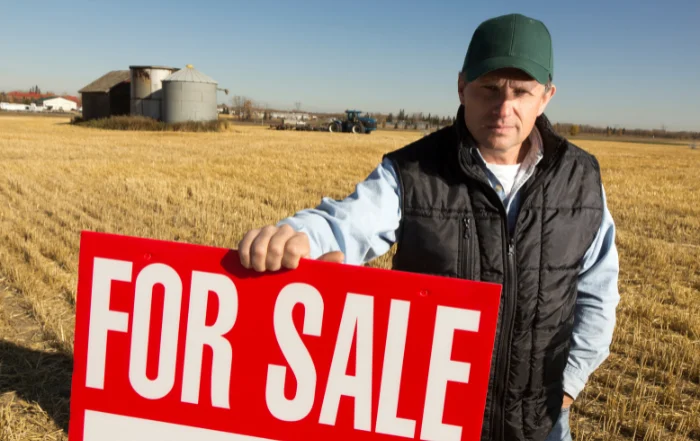In the world of American cattle ranching, a bleak reality looms large. Corruption and consolidation within the beef industry have driven many farmers to the brink of bankruptcy, with some even contemplating drastic measures.
Coy Young, a fourth-generation cattle rancher, found himself on the precipice of despair in 2020. The incessant calls from banks demanding their money pushed him to the breaking point. But a serendipitous intervention by his wife saved his life, prompting him to reconsider his dire decision.
Coy’s plight is not an isolated incident. As consumers witness the skyrocketing prices of beef at their local supermarkets, American farmers find themselves grappling with escalating costs, dwindling sales, and an alarming increase in suicide rates.
Amidst this turmoil, the Big Four beef monopolies continue to reap record profits.
Tim Klein, CEO of National Beef, attributes the high prices to simple supply and demand dynamics. However, these soaring profits rarely find their way into the hands of struggling farmers, creating a stark imbalance.
In the clip below, Tim Klein, explains to the House Agriculture Committee in a hearing on cattle market prices in April 2022 the many reasons why cattle prices have skyrocketed as the big four reap record profits and ranchers continue to struggle.
The situation is now reaching a critical juncture. Either significant changes must occur, or the future of American ranchers hangs in the balance. This predicament serves as a testament to the challenges faced by the beef industry and underscores the need for a more equitable and sustainable approach.
Coy’s experience is emblematic of the larger crisis gripping the industry.
Related: Mr. Young was invited to speak to the House Committe on Agriculture. You can download his remarks here.
In 2021 alone, over 14,700 cattle farmers are expected to sell their farms or face bankruptcy.
Over the past few decades, the United States has witnessed a staggering loss of 44 percent of family farms, leading to the gradual deterioration of rural communities that once thrived around them. Coy, burdened by insurmountable debt, has been forced to liquidate his entire herd, leaving behind a legacy tarnished by financial ruin.
To comprehend the complex dynamics at play, it is crucial to understand the various stages involved in cattle ranching and beef production.
The process begins with ranchers like Coy, who raise cattle from birth until they reach a specific weight, typically around 500–600 pounds.
These ranchers sell their cattle at local livestock markets through auctions, which are intended to establish fair market prices based on factors such as weather conditions, grain prices, and international sales.
However, as consolidation within the industry has intensified, ranchers face a dwindling number of buyers, resulting in reduced profits. The open market system that ranchers once relied on has been overshadowed by a prevalence of closed-door contracts between packers and feedlots. These alternative marketing agreements (AMAs) circumvent the traditional auction process and create a captive market, depressing prices for ranchers.
Presently, a staggering 73 percent of cattle sales occur through AMAs, exerting immense pressure on feedlots to meet demands. Consequently, feedlots have also consolidated, leading to overcrowded conditions and environmental pollution. The high-density feedlots are responsible for approximately 7 percent of emissions that contribute to global warming in the United States.
The consolidation and monopolistic practices of the Big Four, namely Tyson, JBS, Cargill, and National Beef, have significantly disrupted the beef industry. These conglomerates now control a staggering 85 percent of the market, creating a bottleneck system where they exercise control over slaughterhouses and dictate prices.
While consumers face rising costs for beef products, the farmers themselves receive a meager 39 cents for every dollar spent on burgers and steaks. In contrast, in the 1970s, farmers received 60 cents for every dollar.

R-CALF USA & COY YOUNG PARTNERSHIP
R-CALF USA is a national, non-profit organization, dedicated to ensuring the continued profitability and viability of the U.S. cattle industry. R-CALF has partnered with rancher Coy Young to create No Rancher Left Behind, a virtual support group for ranchers.
More To Discover
To comprehend the origins of this predicament, it is necessary to delve into history. In 1906, Upton Sinclair’s novel “The Jungle” shed light on the deplorable conditions within Chicago’s stockyards, where tens of thousands of cattle were held in horrific conditions.
As public outrage ensued, President Woodrow Wilson initiated a probe by the Federal Trade Commission. Two years later, Congress passed the Packers and Stockyards Act of 1921, which aimed to curb monopolistic practices and promote fair competition within the meatpacking industry.
For decades, there was bipartisan support for the regulation of monopolies, recognizing their detrimental impact on consumers and workers. However, a shift occurred in the late 20th century, driven by economists from the University of Chicago School of Economics such as Milton Friedman and Robert Bork. Their ideologies favored deregulation and emphasized consumer welfare, prioritizing lower prices over concerns related to mergers, price discrimination, and market concentration.
Under the influence of these economists, President Ronald Reagan reshaped antitrust laws, rolling back decades of protections for workers and consumers. Consequently, the beef industry witnessed a significant consolidation of power, as the largest packers increased their market share from 25 percent in the 1970s to the current 85 percent. The consequences of this concentration are evident today, as minor disruptions can have far-reaching effects on the entire supply chain.
The COVID-19 pandemic exposed the fragility of the beef industry’s consolidated model.
Slaughterhouse shutdowns due to outbreaks left ranchers with no outlet to sell their beef, resulting in inflated prices for consumers without commensurate benefits for farmers. The pandemic merely unveiled the existing vulnerabilities, rather than creating them.
Coy’s story is a poignant reminder of the challenges faced not only by cattle ranchers but also by small businesses across America. The Biden administration has the power to enforce the largely neglected Stockyards and Packers Act of 1921, offering a lifeline to struggling farmers and rebalancing the industry. Vigorous antitrust enforcement and the promotion of healthy competition are vital to prevent the further erosion of small farmers and the erosion of rural America’s vitality.
The current state of affairs in the beef industry represents a second era of robber barons, reminiscent of Upton Sinclair’s era. The solution lies in confronting corporate power, enacting and enforcing antitrust laws, and fostering an environment where small farmers can thrive. It is time to reimagine a more equitable and sustainable future for the beef industry and to ensure the preservation of America’s agricultural legacy.


















